- Best Soaker Hose Options Your Yard Truly Needs This Year - January 5, 2024
- Best Tomato Planters You Should Really Consider for Your Garden - December 21, 2023
- Best Home Depot Tomato Cages to Support Your Plants - December 16, 2023
When I was a kid helping in my grandma’s garden, I thought gardening was the most complicated profession out there. After all, you have to treat each plant as an individual. You need to know when they are in season when they can be planted in your region, and what soil and temperature conditions they require. But after one summer with my grandma, I discovered it wasn’t so complicated.
Unraveling the mystery of growing seasons and regions has allowed me to grow amazing gardens full of delicious produce every year. Because it was so revolutionary to me, I want to share it with you in this article. With the information in this article, I believe we can all grow delicious watermelon every year, no matter where we live. So, let’s dive in.
Bottom Line Upfront
This article is filled with a lot of detailed information that may take you some time to read. I suggest you set aside an afternoon to read the entirety of this article, but until you have time, let these tips suffice:
- Learn which USDA growing zone you live in
- Learn how to grow watermelon seeds indoors
- Learn how to transplant watermelon sprouts outdoors
- Talk to other gardeners in your area
- Test and adjust your soil’s pH levels
- Provide your watermelon plants with 8 hours of full sunlight
- Provide your watermelon plants with well-draining soil
- Learn how to select a ripe watermelon
The Season of Watermelon
As you may have guessed, watermelon season varies depending on where you live. The good news is that modern science has eliminated a lot of guesswork for gardeners.
Now you can click on a website to find out exactly when and where you should plant any fruit, vegetable, flower, tree, or shrub. Not only do we have essential gardening information at our fingertips, but we also have all the gardening equipment we need.
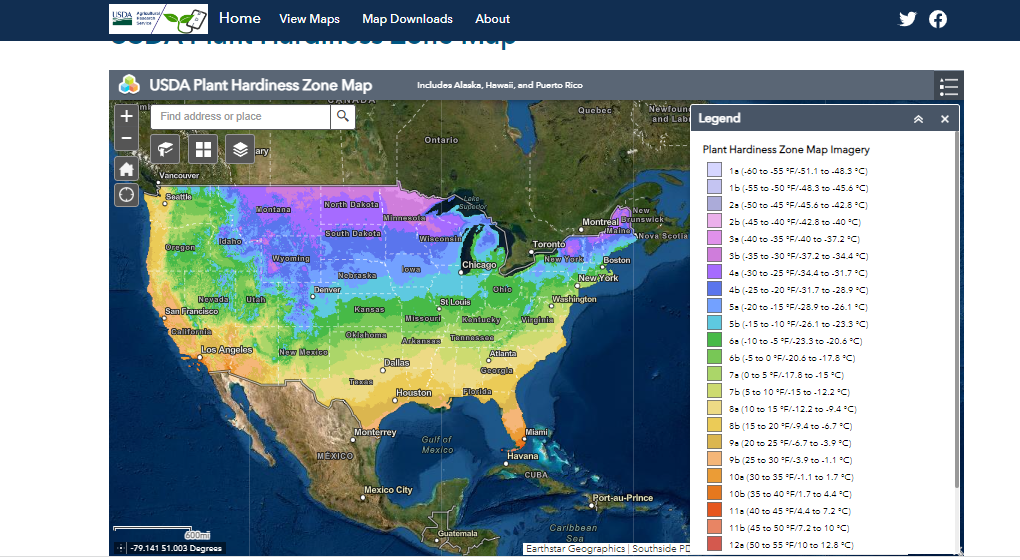
Here are a few of my favorite guides for when I have a gardening query:
- Almanac.com – This is a great place to go with general questions
- USDA Plant Hardiness Zone Map – This is the map you should use to find which zone you live in
- Weatherspark.com – This is a website that has a graph of monthly average temperatures anywhere in the world
- Gisgeography.com – This map shows average annual precipitation throughout the United States
I’m a visual learner, and I assume a lot of people in this media-driven era are as well. So, to keep things visual and uncomplicated, I have pulled together the following chart. Use this chart to find out when you should plant and harvest watermelon in your area. Hopefully, this makes learning about watermelon season a lot easier for you.
| USDA Zone | Harvest Time | Sowing Time | Recommended Variety |
| 1 | July – August | May | Sweet Dakota Rose |
| 2 | July – August | May | Blacktail Mountain |
| 3 | July | May | Sugar Baby |
| 4 | July – August | May | Orangeglo |
| 5 | July – August | May to June | Yellow Doll |
| 6 | July – August | May to June | Black Diamond |
| 7 | June – August | April to May | Jubilee |
| 8 | June – August | March to April | Crimson Sweet |
| 9 | May – July | February to March | Cream of Saskatchewan |
| 10 | May – November | March to September | Southern Light |
| 11 | May – November | March to September | Navajo Sweet |
| 12 | March – December | January to February | Moon and Stars |
Recommended Watermelon Varieties & Growing Tips

As we talk about watermelon season, I thought it would be a good idea to take a moment to discuss the best varieties for each region and how to grow them there. I feel that this discussion is less a sidetrack topic and more of a deep dive into the subject of watermelon season. I hope the following information helps instruct and encourage you as you plant your garden.
USDA Zone 1
I always assumed watermelon could not grow in zone 1; however, I recently learned my assumption was incorrect. It may take a little more work, but it can be done. If you live in this zone, you will need to take some extra steps and choose a variety that can handle the short growing season of this region.
For this zone, I recommend growing Sweet Dakota Rose. You won’t be disappointed by taste or size with this variety. I love that the flesh of this variety is tender, juicy, and sweet and it grows up to twenty pounds. There is always plenty to share with my family if I’m so inclined.
The secret to growing watermelon in zone 1 is to start indoors. Now, typically, I don’t recommend this method, but you really cannot get around it in this region; there is not enough warm summer weather here to do otherwise.
These are the steps I recommend to work through this method:

- Plant watermelon seeds in a peat pot filled with seed starting mix (three seeds per pot)
- Place the pots in a place with temperatures that are at least 80° F (use a plant warming mat if necessary)
- Wait until sprouts appear before watering them (keep the soil moist, not soggy when watering)
- Reduce heat to 70° F once germination has taken place (this is not required but can be done if you so choose)
- Transplant the seeds to your garden once outdoor soil is at least 60° F (use a soil thermometer to check this) and the sprouts are only 3 to 4 weeks old
- Space each plant two to three feet apart in the garden
- Spread IRT solar mulch on the ground
- Water and weed as needed
USDA Zone 2
This zone is similar to zone 1. If you live in this zone, you should also start your watermelon indoors about a month before the last frost in your area. This is usually the first week of May, but you should always refer to frost guides for your region before planting anything.
For this zone, I recommend trying the Blacktail Mountain variety. What I love about growing this variety in a cold climate is that it grows to maturity in about 75 days. This helps a lot when you don’t have a large supply of summer sun each year.
Fortunately, you’re not going to feel like you have settled for a subpar fruit because of your region; this watermelon variety tastes really good.
USDA Zone 3
We’re getting a little warmer within this zone; nevertheless, you will still need to be careful about when you put your watermelon outside. I suggest you experiment with your seeds and plant some indoors and some outdoors. Remember, though, watermelon should not be set outside until after the final frost of the season and when soil temperatures are higher than 60° F.
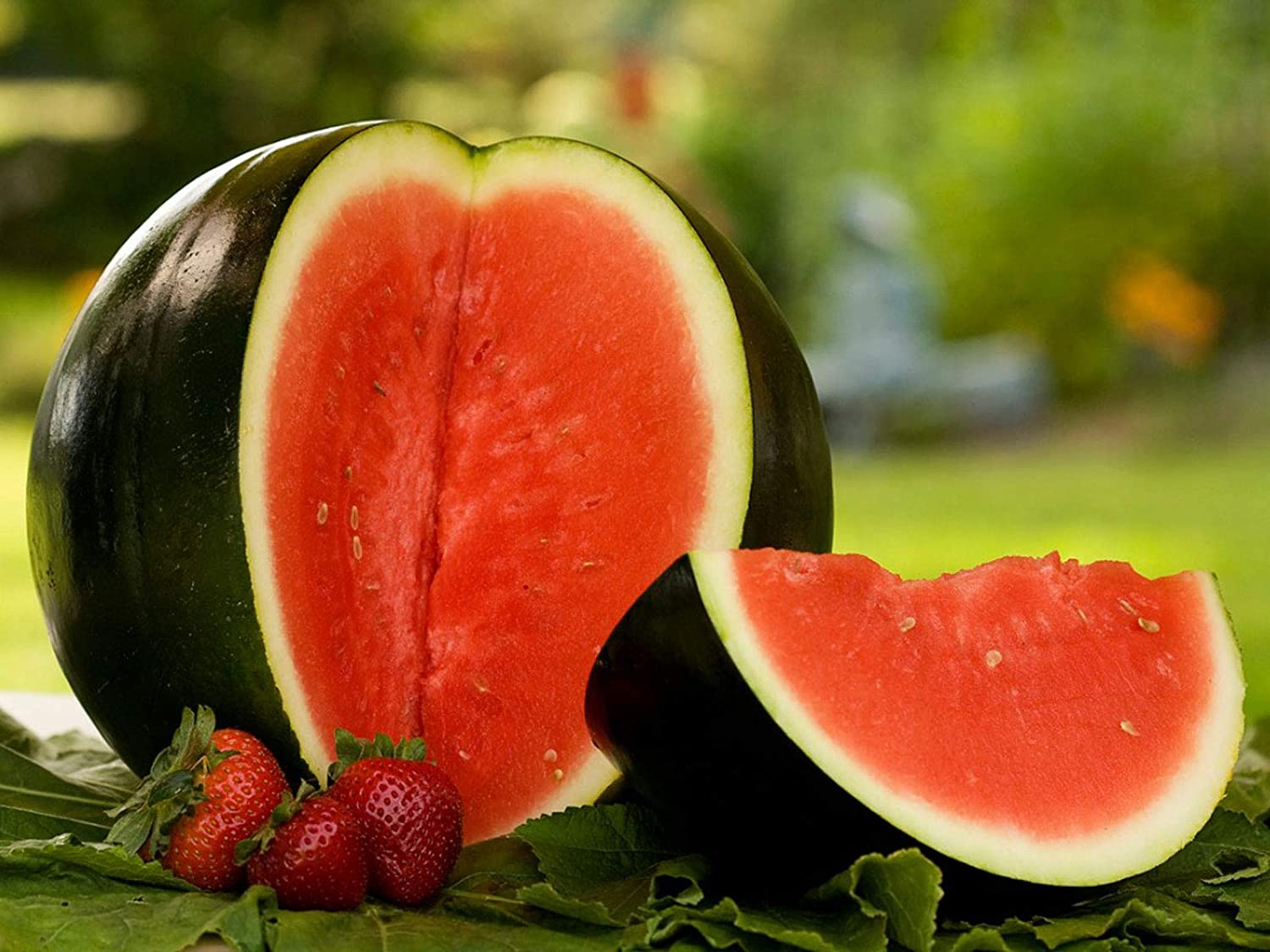
My favorite watermelon to grow in zone 3 is the Sugar Baby variety. Honestly, it is a great one to grow in any of the colder zones. This is mainly because it takes only 70 to 75 days to reach maturity – an ideal amount of time for regions with short summers. Also, it is super yummy and compact. I think it makes a great snack for picnics.
USDA Zone 4
Zone 4 is still on the edge of warm and cool in terms of watermelon gardening. If you want the best chance for success, you should probably try to grow some seeds indoors and some outdoors.
If you live in this zone, you’ll be happy to know that the Orangeglo watermelon variety can be grown here. It will take some babying on your part, but I guarantee you’ll love the fruit you get in return. Orangeglo watermelons look and taste unique. As their name implies, they are orange on the inside. But more than that, they taste like tropical fruit. My personal opinion is that everyone should grow more of these.
USDA Zone 5
Within zone 5, you will find a comparably longer and warmer summertime than the previous four zones. However, I want to remind you to always check frost dates in your area and plan your watermelon garden ahead of time. If you are prepared, you won’t risk ruining your melons by planting them too soon.
I enjoy trying varieties that are unique, but still tasty, so I recommend zone 5 residents try growing Yellow Doll watermelons. This yellow-fleshed variety is crunchy, juicy, and mildly sweet. Plus, it comes to maturity within 75 days of sowing. You can’t beat growing a delicious melon in a little over two months.
USDA Zone 6
This is the zone where watermelon begins to thrive. Zones 6 and up are ideal places to grow these fruits because they get long and hot summers. Within zone 6, there is no need to start seeds indoors; in fact, I recommend that you avoid this method if possible. The truth is, that watermelon sprouts and seeds are very sensitive, and transplanting them can cause shock, which can kill them. But, you have to do what you have to do.
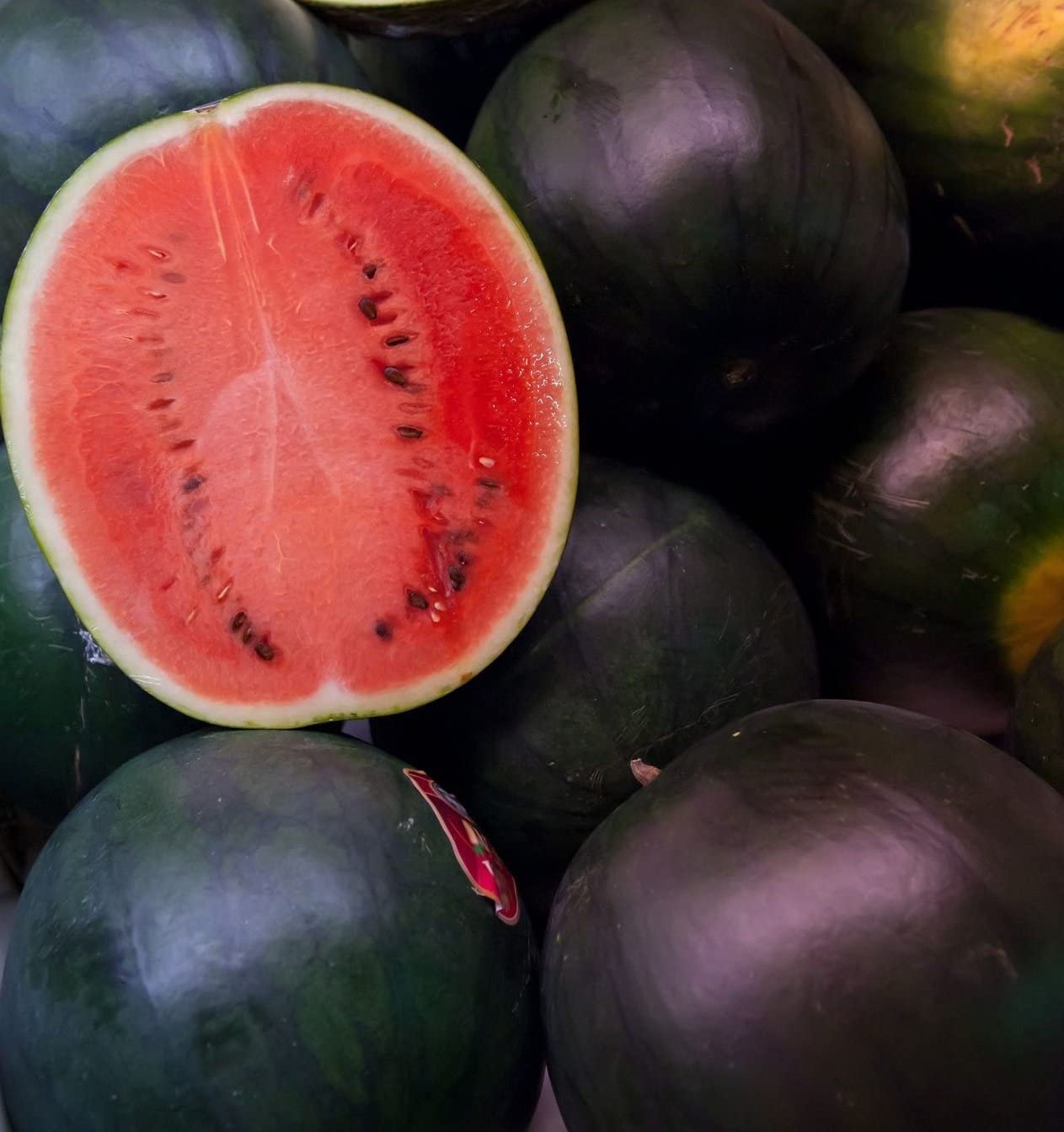
My personal favorite watermelon for zone 6 gardens is the Black Diamond variety. The rind on this melon type is slick and rubbery-looking, but the flesh is red and juicy. I also love the level of sweetness it contains, not too much but just enough. I’m sure you’ll love this melon too.
USDA Zone 7
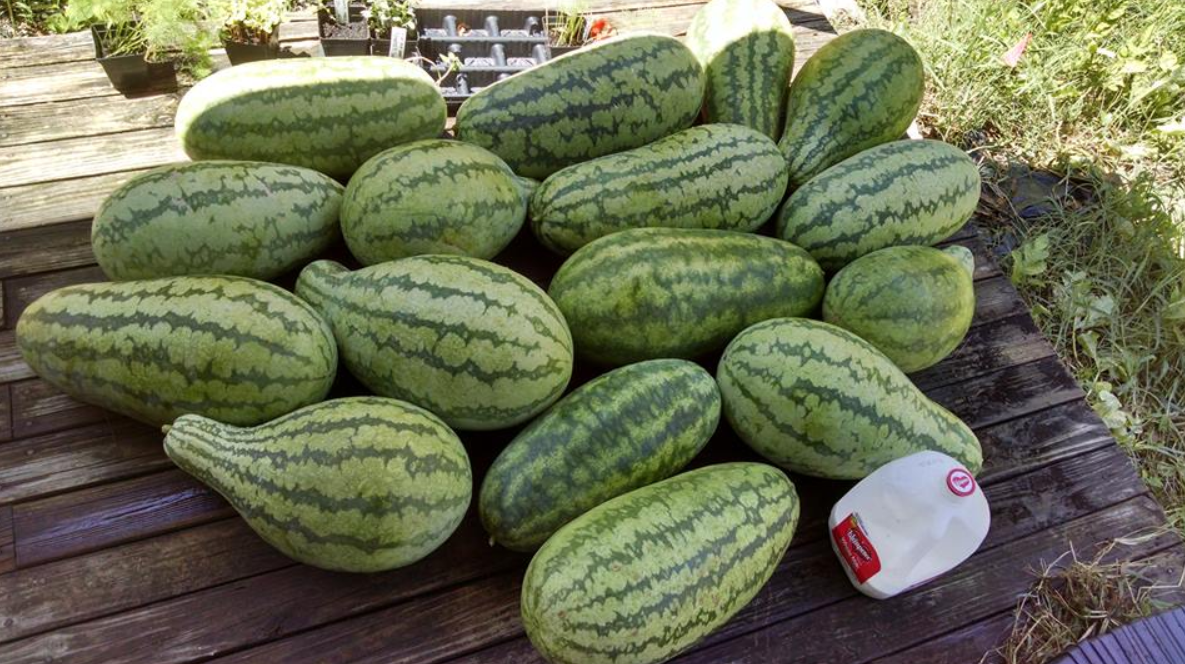
I honestly don’t know how you could make it through summer in zone 7 without a watermelon to cool you off. If you live here, you need to get a garden going ASAP. For this zone, I recommend the Jubilee variety. It is massive so make sure you have plenty of space for it to vine safely. But once you harvest one of these forty-pound giants, you’ll be too excited to care about garden space.
USDA Zone 8
Many of the regions within zone 8 tend to be a little drier than others. Because of this, you can expect your watermelons to be a little sweeter. An interesting component of watermelon gardening is that they should not be watered every day. Once they produce fruit, watering should take place every three to four days or when signs of unhealthy dryness appear.
For zone 8 gardens, I recommend growing the Crimson Sweet variety. I love its size (over 20 lbs.) and the color of its lusciously red-tinged flesh. Oh, and it tastes pretty delicious too.
USDA Zone 9
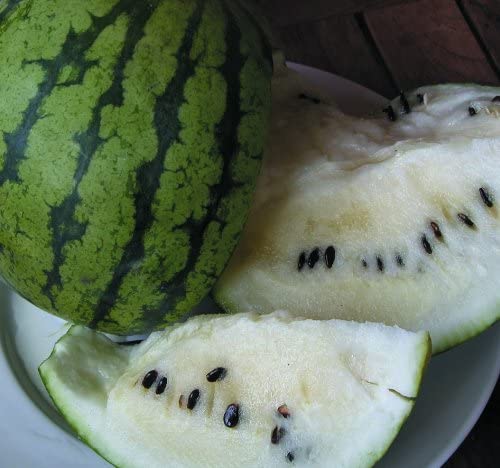
This zone is like a watermelon paradise. You can grow any variety here that you want without concern. Personally, I think you should try growing something unique, such as the Cream of Saskatchewan variety. This is a white-fleshed, highly sweet, and compact variety. I love its unique features and tastiness.
USDA Zone 10
If you live within this zone, you can expect a beautiful harvest of watermelon every year. Zone 10 is an awesome place to grow any and every type of watermelon there is. My personal recommendation, though, is to try growing Ice Box watermelons here, specifically the Southern Light variety.
I love this watermelon variety for many reasons. First off, it is delightfully sweet, reaching a 10 on the Brix scale. Secondly, Southern Delight watermelons are moderately sized at 13 pounds. Thirdly and finally, this variety reaches maturity in 77 days. In my opinion, they are nearly perfect.
USDA Zone 11
This is a really hot and dry zone, but don’t let those factors keep you from growing watermelon. Watermelon can and will grow here; in fact, they are extra delicious when eaten in the heat of zone 11.
If you live in zone 11, you should not miss out on the opportunity to grow the Navajo Sweet variety. With a little practice, you can increase this variety’s sweetness by carefully stressing it. If you don’t care to do that, you’ll still enjoy this melon’s 9.6 Brix scale sweetness. While I do love the flavor of this melon, I also love that it has pink flesh, is great for growing in drought conditions, and can be eaten well into the Autumn season.
USDA Zone 12

This zone features a climate that is often hot and humid – a perfect place to grow amazing watermelons. Since you can grow watermelon basically all year round in this zone, I recommend trying your hand at the Moon and Stars variety. It will take at least 95 days for one of these melons to reach maturity, so this zone, with its great amount of heat, is ideal. Also, I think you’ll want to taste the watermelon that won a spot on the Slow Foods Ark of Taste.
FAQs
Answer: Yes, watermelon grows better in soil with pH levels ranging between 6.0 and 6.5. Test the soil using a soil pH test kit. If you find that you need to adjust the levels, here’s how:
Alkalinity: To increase the alkalinity of your garden soil, add some ground agricultural lime to it. Be sure to take into account the type of soil in your garden. For example, soil with a lot of clay will require more ground lime than soil with little clay. Test, mix, and test again.
Acidity: To increase the acidity of your garden soil, add some aluminum sulfate to it. This chemical should adjust the pH levels almost immediately. Again, you should test, mix, and then, re-test so you get the correct pH level.
Answer: The best type of soil for a watermelon garden is sandy and loamy. Ultimately, your watermelons need soil that drains easily and has plenty of nutrients in it. If you don’t live in an area that has this type of soil, I recommend that you construct a raised garden bed. With this type of garden, it won’t matter what your location’s natural soil contains because you can get soil and compost from your local garden supply shop.
Answer: Sunlight is probably the most important factor to consider when you grow watermelon. This vining fruit needs a lot of quality time with our sun. When you select a garden plot for your watermelon, ensure that it receives at least 8 hours of full sunlight every day.
Answer: Yes, the key signs of a ripe watermelon are:
• They have been planted for the amount of time recommended on their seed packets
• They look like a mature version of their variety
• They have a field spot on one side
• They do not have shiny skin (it should be dull)
• They have green and cream stripes if that is a feature of their variety
• They are uniform in shape
• They have evidence of pollinating and sugaring on their rinds
• They sound hollow when tapped
• They feel heavier than they look
Conclusion
Now that we have taken a deep dive into watermelon season, I think I can conclude by saying that the potential for deliciousness is written within these lines. I hope that you have also found inspiration and encouragement to pursue all the potential deliciousness that a watermelon garden offers. May you have great success in the dirt and many grand gatherings around the fruits of your labor.
For even more gardening tips, I want to recommend these three articles written by my talented JardinHQ colleagues:
- Garden Tower Project Review: How To Start Home Gardening ASAP?
- Growing Bok Choy: How to Grow and Care for Bok Choy
- Hydrangea Types Growing Guide: How To Successfully Grow It?

